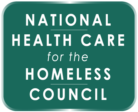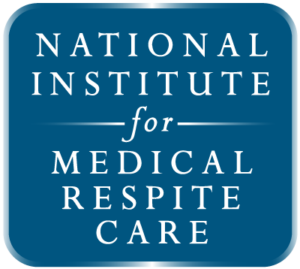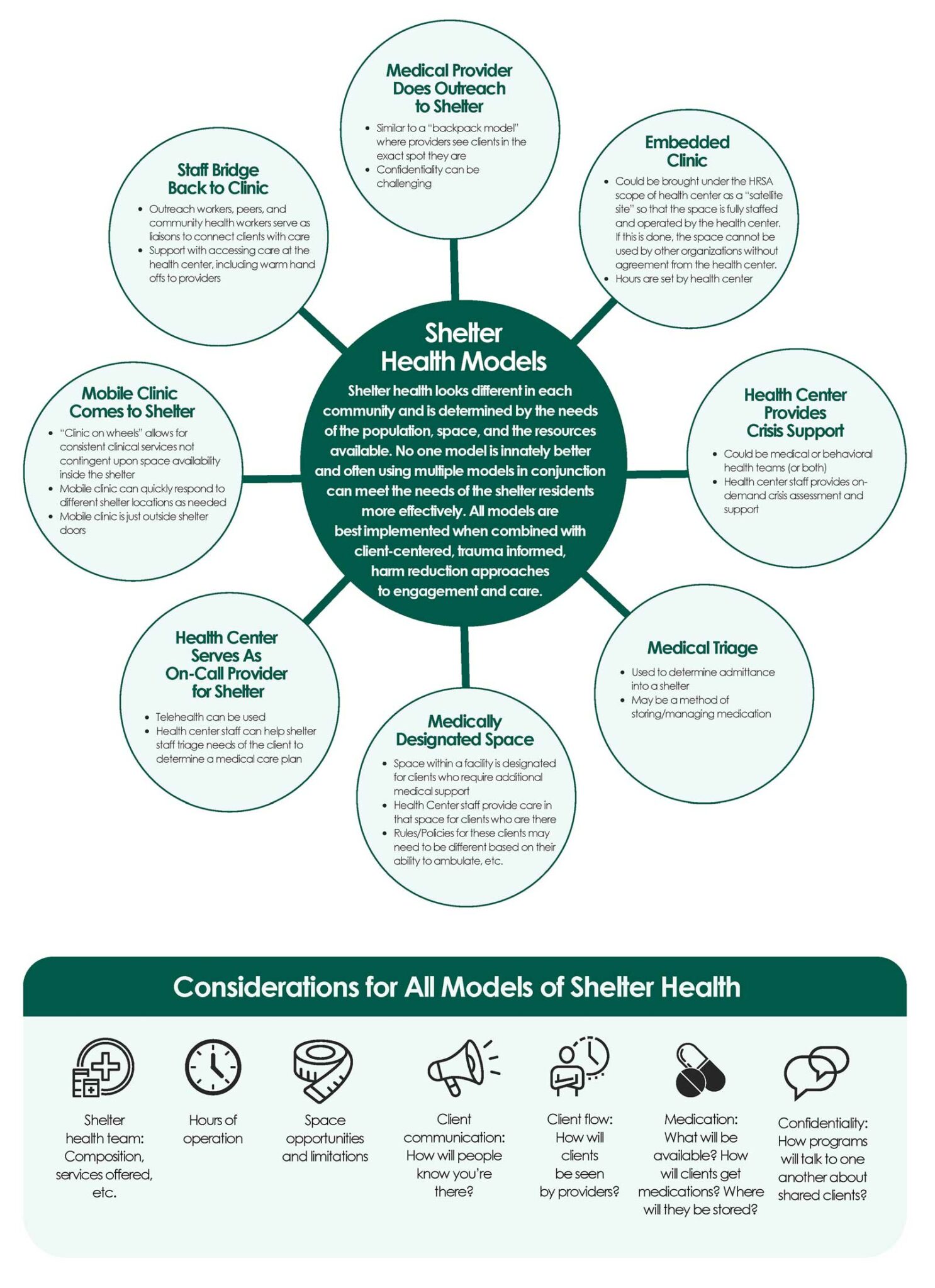Introduction
During the height of the COVID-19 pandemic, Health Care for the Homeless health centers collaborated with homeless shelters to mitigate COVID-19 transmission. This experience revealed that health centers and shelters can successfully collaborate to create a continuum of care that is better equipped to increase access to care and improve health outcomes for patients/residents, than if one organization attempts to implement changes/practices alone.
Shelter health is a broad term that encompasses both the health of the individuals residing in that shelter as well as the environmental factors that contribute to the health and well-being of those who reside and work there. Improving shelter health requires increasing residents access to health care services – medical, mental health, and substance use – while also planning for and responding to events that impact the overall health of everyone in the facility. These impacts could be disease related (e.g. infectious diseases that are transmittable from person to person, such as TB, COVID, C-Diff, etc.) or environmental (e.g. worsening air quality, natural disasters, etc.) and could happen acutely or be an on-going issue that shelters must adapt to.
Health Centers, especially health care for the homeless providers, are uniquely positioned to engage with shelters to provide care for their residents and to develop procedures, policies, and response plans to expected and unforeseen health concerns. This toolkit contains resources health centers and shelters may use to improve access to primary care for people experiencing homelessness and identify strategies to create strong partnerships between shelters, health centers and local health departments.


